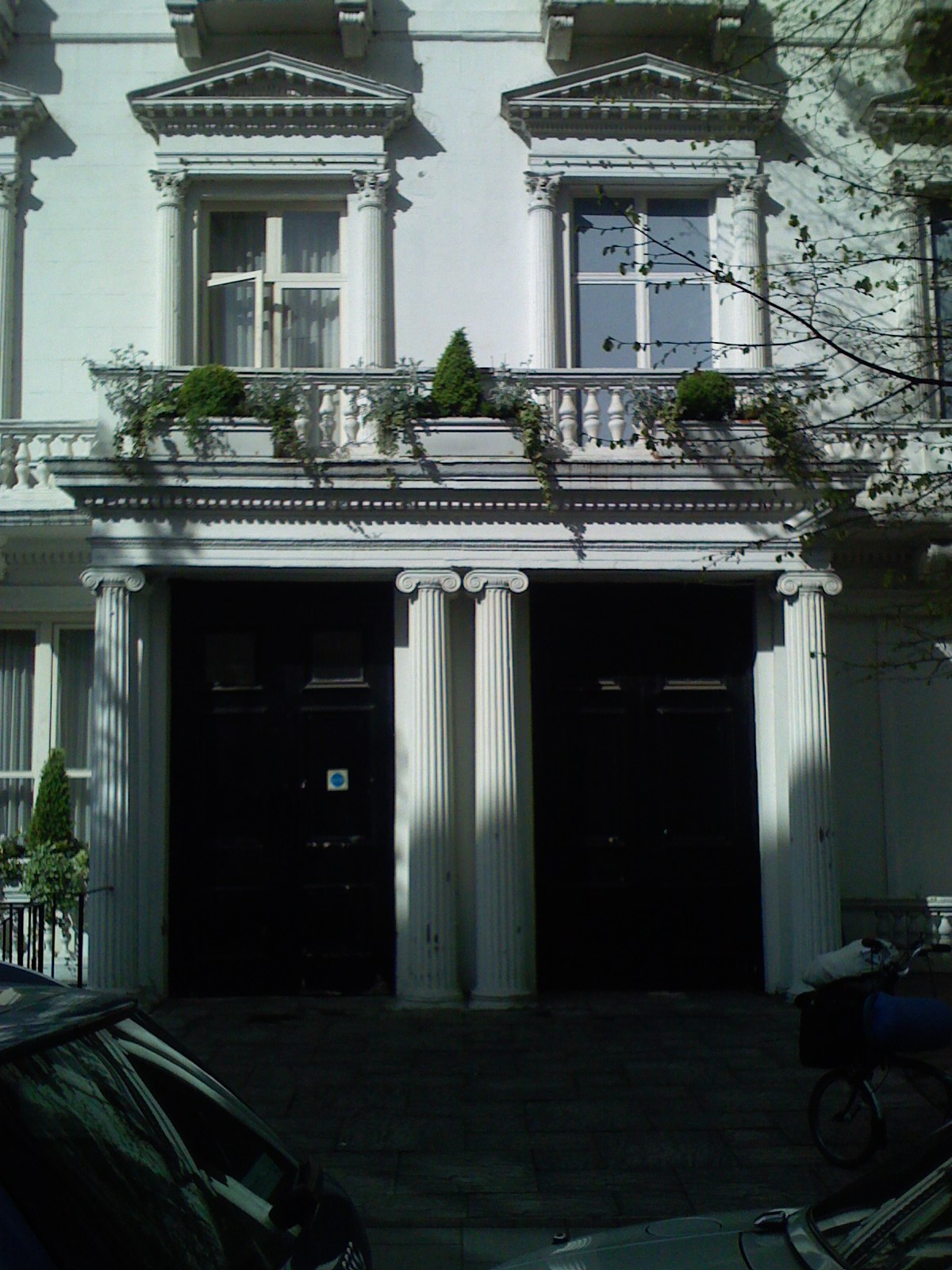Open House

Pictured above are the doorways to numbers 22 (left) and 23 (right) Leinster Gardens, Bayswater, London. In the 1930s, #23 made news when a handful of London’s elites showed up to the door, dressed in evening wear, for a charity ball — only to find out that no one was home. Or, more accurately, that 23 Leinster Gardens was no one’s home — and in, fact, it wasn’t a home at all. The door wasn’t a door. The windows weren’t windows. And if they had scaled the white-painted brick facade, they would have seen that behind this front wall was nothing at all.
23 Leinster Gardens isn’t a house. It’s a wall painted to look like one.
In 1863, London began operation of the Metropolitan Railway, a predecessor of today’s London Underground. It slowly expanded over the next few decades, and in 1868, the city transit system built tracks underneath Leinster Gardens. Specifically the tracks ran under #23 and #24 Leinster Gardens, and the construction team determined that the railway system required ventilation in that area. So they aimed to tear down the buildings and left open-air tracks, below street level, exposed to the community. But that would leave an unsightly gap in a rather upscale area, so the interested parties came to a compromise: a fake front, with painted-on doors and windows and no means of entry to a house which doesn’t exist.
Behind the facade? As seen in the fourth and fifth images here, there’s not a whole lot. There is no structure behind the wall adorned with false windows and a door — just open space. A brick wall (see the sixth image on that link) obscures the rear view from the street, but get high enough and you can see the girders running above a two-track-wide gap. A train tunnel runs under Leinster Gardens (the street) itself, and where #23 and #24 would be, there is instead an otherwise unobstructed view (girders aside) of trains on the Underground’s Circle and District lines.
While the building (or lack thereof) is an open secret, it isn’t a well-known fact. Just ask the area pizza delivery joints. According to the Daily Mail, fake orders to 23 Leinster Gardens are a common occurrence, and all too often, unnoticed until the driver arrives at his or her non-destination.
Bonus fact: London isn’t the only city with tracks hidden under a faux home. New York has this too, in Brooklyn. In the Brooklyn Heights neighborhood, there’s a brownstone which is really a ventilator for the New York City Subway. The home which was originally built in the 1800s is now a doorway into the subway system; unlike the Leinster Gardens building, the door actually works (but it leads to a stairwell leading down). More photos of the “home” can be found here.
From the Archives: The President’s Secret Train Station: Another secret of New York City’s transit system.
Related: An art print from the Museum of London from the 1866-1868 period, showing the construction of the Leinster Gardens train opening.
